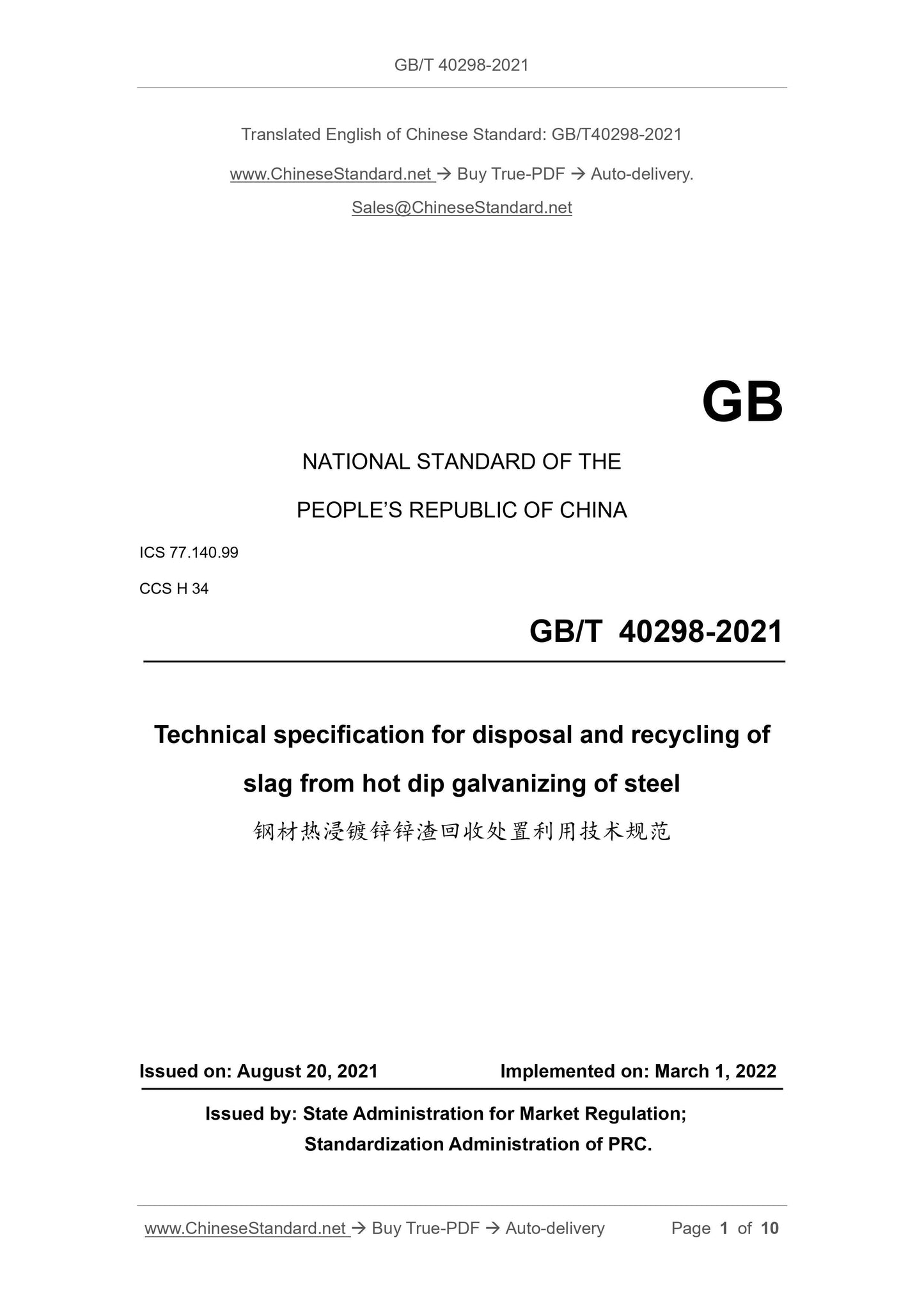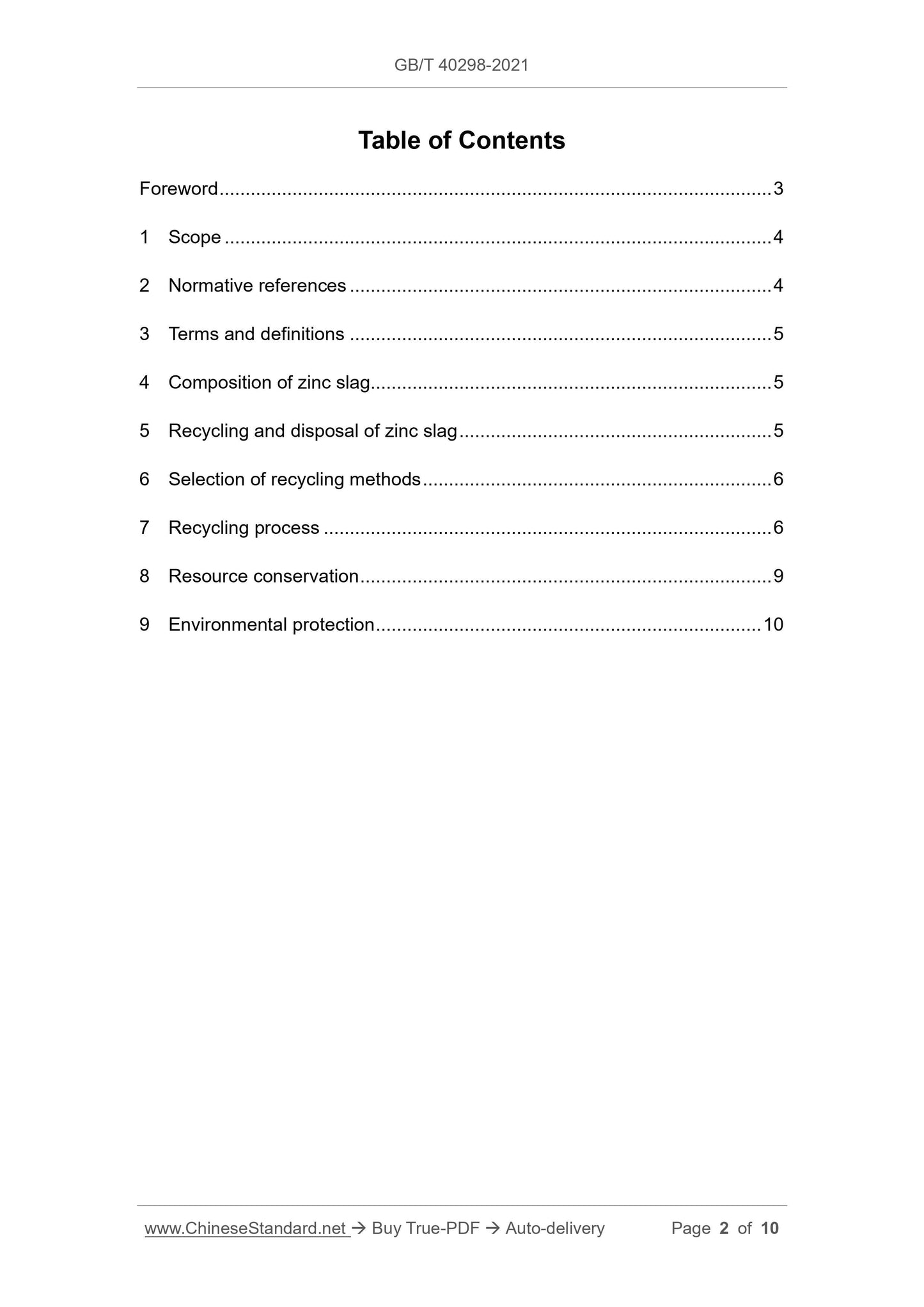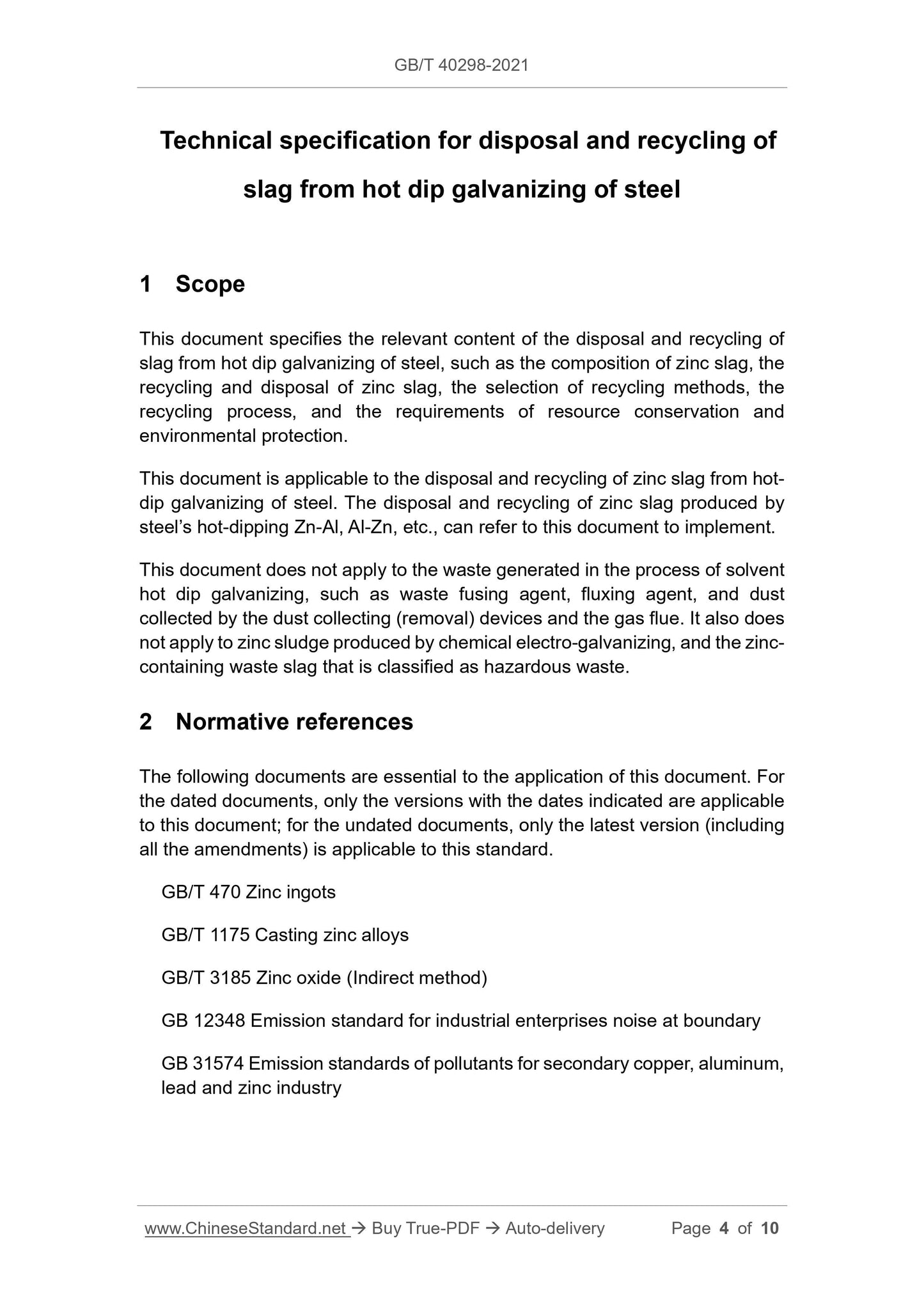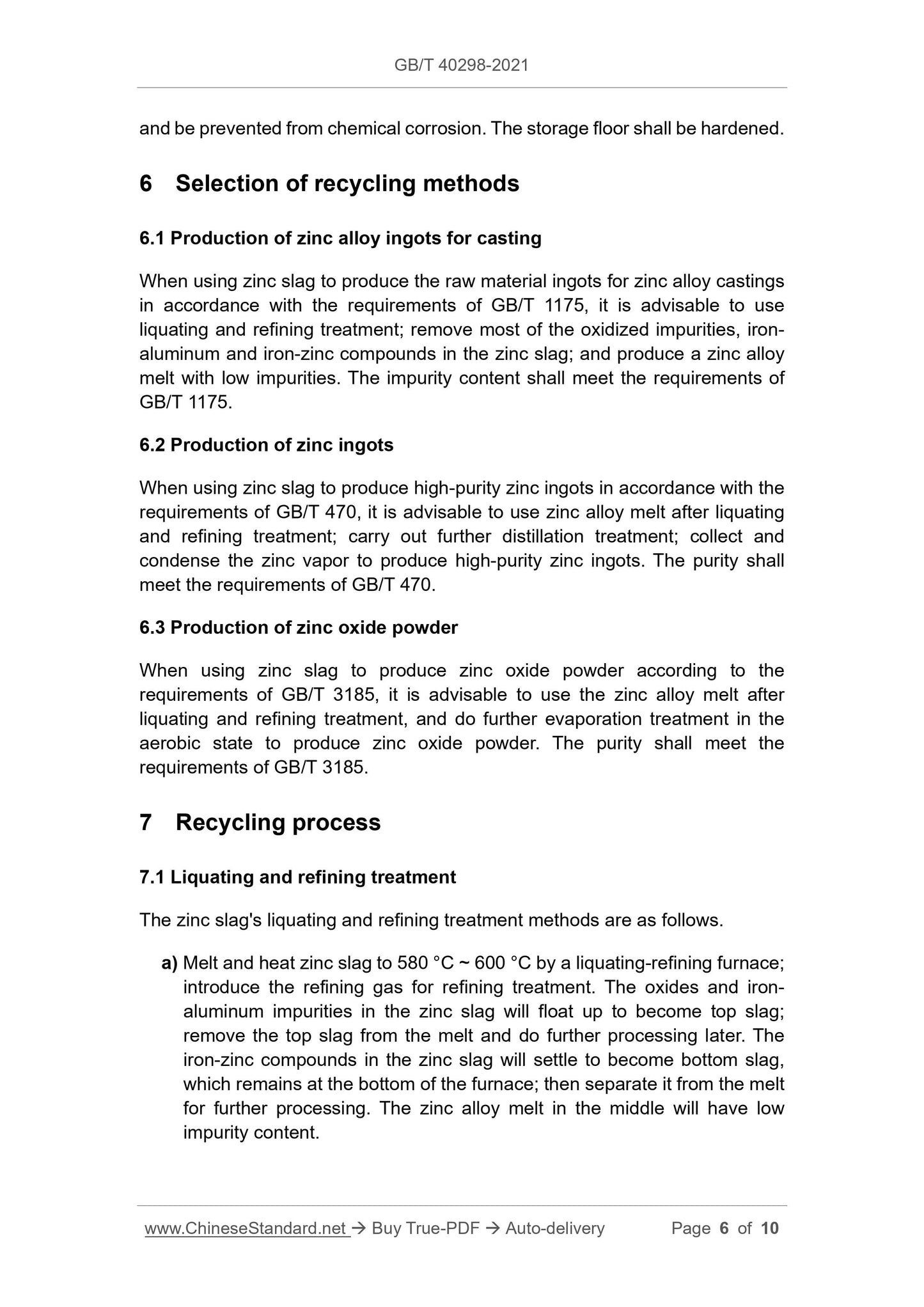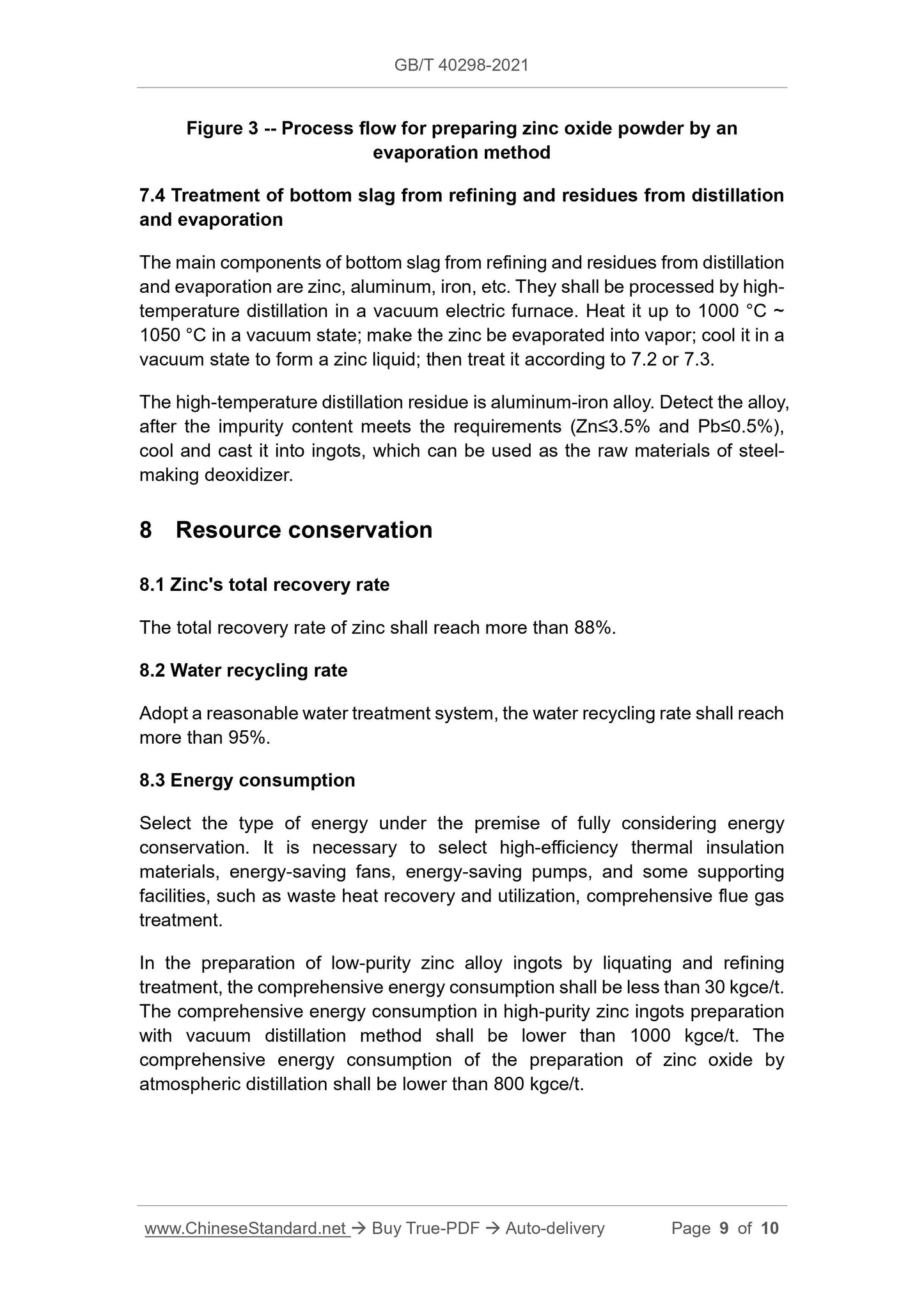1
/
of
5
www.ChineseStandard.us -- Field Test Asia Pte. Ltd.
GB/T 40298-2021 English PDF (GB/T40298-2021)
GB/T 40298-2021 English PDF (GB/T40298-2021)
Regular price
$170.00
Regular price
Sale price
$170.00
Unit price
/
per
Shipping calculated at checkout.
Couldn't load pickup availability
GB/T 40298-2021: Technical specification for disposal and recycling of slag from hot dip galvanizing of steel
Delivery: 9 seconds. Download (and Email) true-PDF + Invoice.Get Quotation: Click GB/T 40298-2021 (Self-service in 1-minute)
Newer / historical versions: GB/T 40298-2021
Preview True-PDF
Scope
This document specifies the relevant content of the disposal and recycling ofslag from hot dip galvanizing of steel, such as the composition of zinc slag, the
recycling and disposal of zinc slag, the selection of recycling methods, the
recycling process, and the requirements of resource conservation and
environmental protection.
This document is applicable to the disposal and recycling of zinc slag from hot-
dip galvanizing of steel. The disposal and recycling of zinc slag produced by
steel’s hot-dipping Zn-Al, Al-Zn, etc., can refer to this document to implement.
This document does not apply to the waste generated in the process of solvent
hot dip galvanizing, such as waste fusing agent, fluxing agent, and dust
collected by the dust collecting (removal) devices and the gas flue. It also does
not apply to zinc sludge produced by chemical electro-galvanizing, and the zinc-
containing waste slag that is classified as hazardous waste.
Basic Data
| Standard ID | GB/T 40298-2021 (GB/T40298-2021) |
| Description (Translated English) | Technical specification for disposal and recycling of slag from hot dip galvanizing of steel |
| Sector / Industry | National Standard (Recommended) |
| Classification of Chinese Standard | H34 |
| Word Count Estimation | 10,161 |
| Issuing agency(ies) | State Administration for Market Regulation, China National Standardization Administration |
Share
